
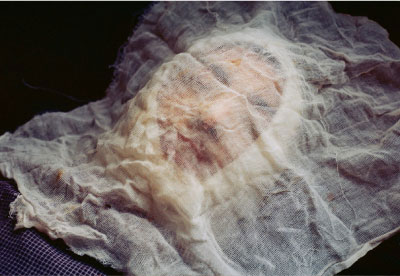
All images courtesy of Stephanie Sinclair / VII (www.viiphoto.com)


Since 2005, over 700 women have set themselves on fire in Afghanistan. Most incidents were caused by repeated abuse, fear of their husbands and petty household disputes.
Self-Immolation in Afghanistan: A Cry for Help is a series of photographs taken by photojournalist
Stephanie Sinclair, one of fifty-five artists chosen for this year’s
2010 Whitney Biennial. Over the course of three years, Sinclair documented a day in the life of Afghan women being treated for life-threatening, full-body burns. More jolting than the images alone, is the knowledge that these victims did this to themselves. Shockingly personal, the photos depict already hopeless women in the throes of utter despair, anguish and vulnerability. In Afghanistan, to obscure the daily violence taking place in their homes is commonplace — almost expected — making Sinclair’s unique point of view all the more jarring and significant. In this exclusive interview, Stephanie Sinclair talks to PLANET about abysmal desperation, inklings of change, and the indelible power of photography.
(more…)
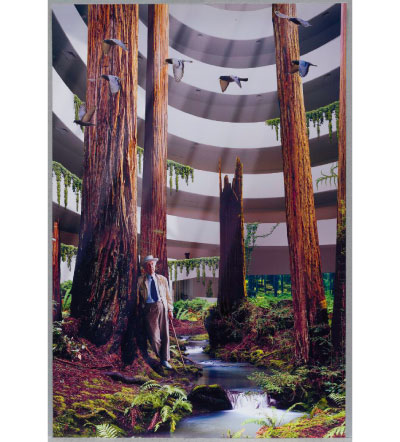
Saunders Architecture, FLW in His Element, 2009 All images courtesy Guggenheim Museum.

In conjunction with its 50th anniversary the Guggenheim Museum sponsored a design challenge, inviting almost 200 artists, designers, and architects to propose treatments for the signature spiraling atrium of its Frank Lloyd Wright building. The collection of proposals, Contemplating the Void: Interventions in the Guggenheim Museum, is on view now through April 28, and also posted on the museum’s website. The show offers a compelling snapshot of contemporary design currents, particularly of green building strategies.
The entries, and the media in which they’re presented, are impressively diverse. There are crayon drawings, watercolors, and pencil sketches, laser-cut models and computer renderings. The most straightforward proposals place one object within the building’s enormous central space. Different designers propose a chandelier, a hot air balloon, a column of water, a cloud of pigment, an oil rig, and the body of an Airbus A380. The more tectonic proposals, which respond to the space’s forms and circulation, are less inspired. Many designers install mirrors to distort perceptions of the space, build interconnecting passages within the space, and extend the existing curving ramp upwards, downwards, and outside the shell of the building.
(more…)
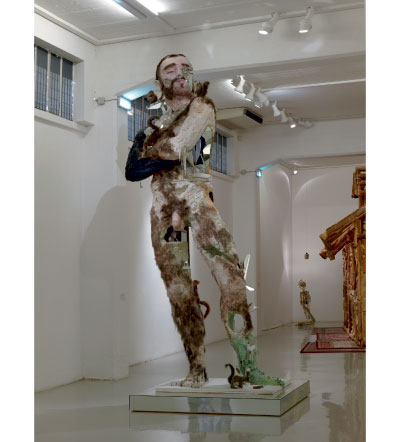
The Giant, David Altmejd. 2006. All images courtesy of The New Museum.

“Nature is being reconstituted,” writes Jeffrey Deitch, the newly appointed director of L.A.’s Museum of Contemporary Art, in the catalogue for the Skin Fruit show, which opened recently at the New Museum. In his essay, Deitch explores how far away from real nature we as human beings have moved, and the possible consequences of such detachment. According to him, the embrace of plasticity and biotechnological advances are threatening to create a breed of “superhumans”, whose concept of nature is defined by computer game renditions rather than actual experience. He views this development as having broad ramifications for art. As he notes, art in its early days was inspired by nature and, over many centuries, artists have looked to nature “for the revelation of basic truths”, redefining nature through their vision. But for today’s — and tomorrow’s — generation, he writes, “the traditional search for truth has perhaps become obsolete”.
Unfortunately, such thoughtfulness doesn’t accompany the actual show on view at the New Museum, despite proclaiming to be themed around the representation of the human body. When it was announced a few months ago, Skin Fruit was greeted with much fanfare. The agitation concerned the non-profit institution’s decision to mount a show of the Greek-Cypriot tycoon and art collector Dakis Joannou’s mighty collection of contemporary art, despite the fact that Joannou presides on its board of trustees. Adding salt to fire, the museum chose to hand over the curating baton to one Jeff Koons who just happens to be heavily represented in Joannou’s art stock.
(more…)
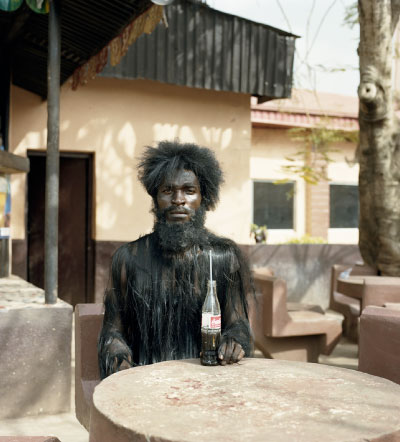
Pieter Hugo Emeka Uzzi, Enugu, Nigeria, 2009. All images from the series Nollywood. Digital C-Print © Pieter Hugo, Courtesy Yossi Milo Gallery, New York
 South African photographer Pieter Hugo is known for his arresting and unsettling portraits of African life. For his latest series, Nollywood, he interpolates the burgeoning industry of Nigerian cinema into everyday scenarios to construct fictional surreal situations.
South African photographer Pieter Hugo is known for his arresting and unsettling portraits of African life. For his latest series, Nollywood, he interpolates the burgeoning industry of Nigerian cinema into everyday scenarios to construct fictional surreal situations.
Nollywood is the world’s third largest film industry, turning out some 1,000-2,000 videos for the home video market every year. Produced on shoestring budgets with a great deal of improvisation, movies are often made in the span of a week under very harsh and uncertain conditions. Featuring local actors in “real life” locations, the movies reflect everyday life. According to Federica Angelucci, curator of the Michael Stevenson Gallery, tragic narratives address familiar themes — romance, comedy, witchcraft, bribery, and prostitution. “The aesthetic is loud, violent, excessive; nothing is said, everything is shouted.”
While working and traveling in West Africa, Hugo found it impossible not to watch these ubiquitous movies. At first mistaking them for soap operas, Hugo soon realized “that they were interesting in their own way, because they were in many respects among the first examples of contemporary, mass-media self-representation in Africa. These are movies made by Africans for Africans, with their own stories…”
(more…)
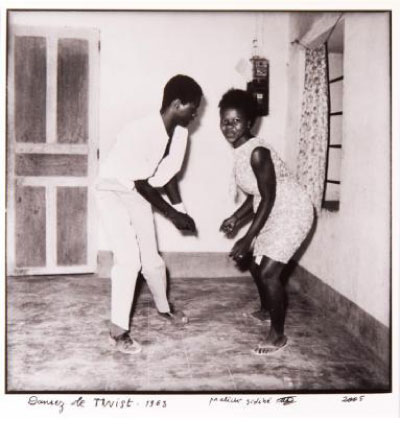
Dansez le Twist, Malick Sidibe. 1963.

As efficient and magical as digital photography has become, nothing can compare to the raw, visceral quality of a film print. Maybe it’s the surprise factor, the photographer’s inability to really know what they’ve got until it’s too late, but film assumes a significance and power digital SLRs still have trouble competing with.
Malick Sidibe’s new exhibit, “Other Africa”, is a small collection of black and white prints influenced by the people and street scene of Bamako in the 1960s and 70s. The images capture the infectious spirit, rhythm, and lightheartedness of post-colonial West Africa at a time when immense shifts of the paradigm and culture were taking place. Whether it’s a staged portrait or a spontaneous dance move, there’s a refreshingly honest, intimate quality to the gelatin prints.
Sidibe purchased his first camera in 1956 when he was about 20 years old. From night clubs to boxing matches to riverside picnics, he soon became the only photographer documenting the kinetic street culture and pulse of the neighborhood. Sidibe’s insider status permitted him access to an era bubbling over with impulsiveness and life. His studio became a popular hangout and he would regularly set up portraits with the youth that hung out there, reinventing his subjects using outrageous costumes and props. The results are spur-of-the-moment glimpses of West Africa in the crux of curiosity and optimism. The results are a revelation of Sidibe’s deep passion for people and his country.
(more…)
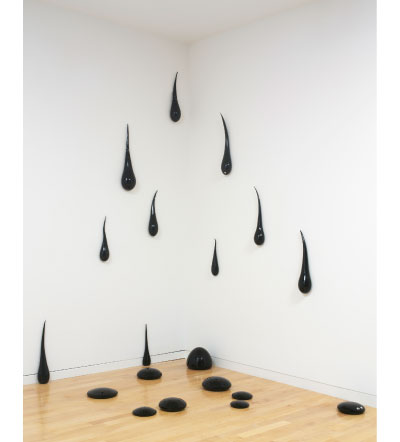
Viscous Rain, Fred Wilson. 2002 Photograph by Ellen Labenski, courtesy PaceWildenstein, New York

Rapper, actor, author, television host, reserve policeman, Twitter megastar, and, yes, basketball legend, Shaquille O’Neal is perhaps the consumate populist Rennaissance man. This month he extends his reach with a new role as curator and muse for the much-buzzed about art show Size DOES Matter at Chelsea’s FLAG Art Foundation. The show, which sets out to display work where size is a central component, boasts an impressive catalogue of artists — Jeff Koons, Anselm Kieffer, Cindy Sherman, Chuck Close, and forty others — and offers an excellent opportunity to experience some fantastic pieces. Whether or not these pieces deal with size is a separate matter.
Shaq personally selected or commissioned the artwork from a list put together by FLAG, and his choices range from pinhead-size sculptures of the First Family to wall-size paintings of body parts, rap stars, and dead Chinese dictators. Highlights include Kieffer’s portrait of a young Mao, a masterful example of the artist’s thick impasto; Koons’ “Beach House”, a frenetically erotic pastiche of swimsuits, deck chairs, and breasts; and Richard Dupont’s lifesize sculptures of himself that play with twisting perspective. A nine-foot-tall photograph of Madonna and her audience, taken from afar, demonstrates each person’s insignificance, while nearby, a collossal sculpture of a table and chairs inspires feelings of childlike joy and awe.
(more…)

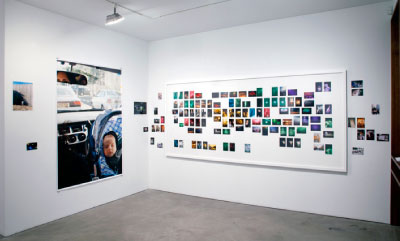
Wolfgang Tillmans, Installation View. (Photography courtesy of Andrea Rosen Gallery)



In this digital age dominated by free media-sharing and instant mobile uploads, photographer Wolfgang Tillmans restores hope in our fading ability to discern beautiful images. German-born Tillmans, known for his rapturous club photos of British i-D, brings to Andrea Rosen Gallery through March 13 a show with the full intensity and point-and-shoot bravura of those seminal nineties spreads. Pictures in the Place of Others, featuring seemingly extemporaneous snapshots of contemporary life, captures tender expressions, natural phenomena, and shimmering skylines. Witness Heptathlon, wherein Tillmans catches an athlete in momentary abandonment; in Ostgut/December Edit (at the entryway of the installation) he assembles chaos with signature panache. When so many photographs bear the markings of deliberation, Tillmans’ appear purely spontaneous. His work thus retains a captivating, timeless quality (perhaps accounting for the unlikely correlations drawn between his irreverent hipster and the Caravaggio nude). An exercise in unkept formalism, Pictures in the Place of Others finds balance in its unapologetic use of color and premeditated, if imperceptible, exhibition layout.
“In a way, to reconcile or address the randomness of the world today is the biggest task, to let it all in, but still hold course…. I’m interested in the mind being stretched by trying to pull this world of pictures together.”
(more…)

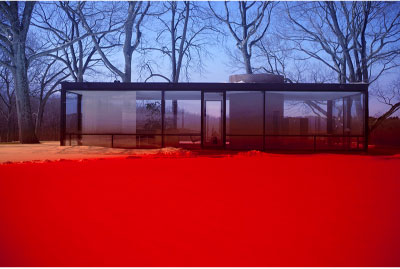
Courtesy Regen Projects, Los Angeles © James Welling


Our image of modern architecture is black and white, quite literally. It’s an image of black ribbon windows in white stucco walls, of slender steel columns behind clear panes of glass. James Welling’s contemporary photographs of architect Philip Johnson’s 1949 Glass House, on display now unitl March 6 at Regen Projects, richly confuse this image.
Welling has captured the house, a landmark of American modernism, with a digital camera and handheld lenses in a series of layered, intensely colored photographs. The prints in the show offer a view of the building that’s tactile, textured, and surprisingly tender.
Most canonical photographs of the house look on it orthogonally, so that its glass skin seems to disappear and its entire structure to dissolve into its manicured surroundings. Welling shoots slightly eccentric perspectives that take in more of the glass and the landscape, and complicates these views by layering them with fields of strong color. This treatment brings out the stubborn physicality of the building. Immense red and green sunspots mottle a glass wall. An orange-colored spill of light reveals the rough surface of an interior carpet.
(more…)
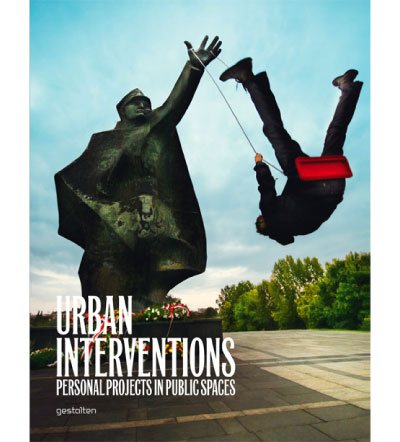
Courtesy of Gestalten Books

I first witnessed urban interventionism at an intersection in La Serena, Chile in 2009. I watched transfixed as a young performer expertly juggled five plastic pins in the middle of the road. He completed his routine and gave a quick bow before darting quickly from one car window to the next, collecting money from drivers’ outstretched hands, jumping back onto the sidewalk seconds before the light turned green again. Though this is a loose example of public art, during the course of my travels through Chile and Argentina, I witnessed beat boxers, mimes, dance troupes and cheerleaders all with the same technique, using the intersection as their stage.
Urban Interventions: Personal Projects in Public Places, due out this March, could very well turn the new art movement into a household word. A creative conglomerate of graffiti, activism, and found street art, the book pays tribute to the most exciting wave of artwork to hit public spaces since Banksy took Bristol by storm in the late ’90s. Urban interventions use ordinary outdoor components to transform everyday landscapes into interactive artwork for the masses. As a result, alleyways become galleries, bus stops morph into studios, and street signs act as canvases.
(more…)
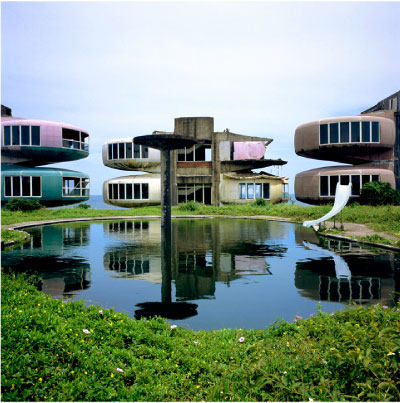
San-Zhr Pod Village, Taiwan, 2008 (Photography by Magda Biernat courtesy of Clic Gallery)


In a world subsumed by top tens and to dos, Polish-born photographer Magda Biernat takes aim at our itemized approach to travel. Now running at Clic Gallery through March 2 is her Continental Bounce, culled from a year of transcontinental exploration. Documenting remote spaces through a local lens, Biernat captures Kenya, Australia, and everything in between. Oceanic vistas aside, though, Continental Bounce is no ordinary tourist brochure. Subtly elusive, the exhibit disorients even the most surefooted of jetsetters. Take Tipi Resort in Swakopmund, Namibia, for example, which features an African chalet seemingly plucked from the Sonoran desert. Avoiding major sites in favor of the interstices that define the journey, Continental Bounce is a testament to shifting borders and cultural ambiguity. We sat down with the artist to discover more.
What draws you to interiors and architecture?
Early on, I noticed that I have a good eye for structures and geometrical shapes and combinations of colors. That’s why I decided to go into architecture commercially…. Even though I love good portraits of people, first of all I am taking pictures of spaces.
(more…)







 Facebook
Facebook Permalink
Permalink Digg
Digg Reddit
Reddit LinkedIn
LinkedIn StumbleUpon
StumbleUpon Tumblr
Tumblr














